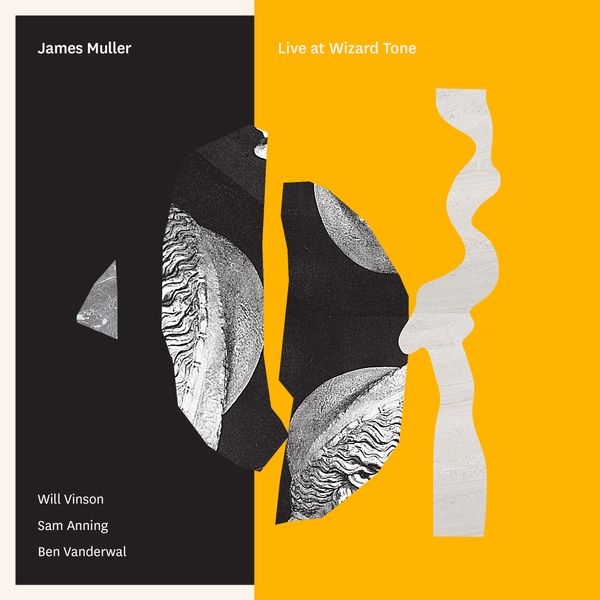JAZZ ALBUM REVIEWS IN THE AUSTRALIAN
In September, 2017 Eric Myers commenced reviewing jazz albums in the Review supplement of The Weekend Australian. All reviews in this folder are written by Myers.
jazz
Echoes of Harlem
Mat Jodrell
Nicholas Records
Four-and-a-half stars
Published in the Weekend Australian April 21, 2018
____________________
Trumpeter Mat Jodrell is one of the finest modern jazz musicians to come out of Perth in the last two decades. The 37 year-old has had a dream career to date, starting with a great education in his home city, followed by several years of working professionally in New York, including lecturing at the Juilliard School of Music, as well as a recent academic position at the James Morrison Academy of Music in Mt Gambier. Now the icing on the cake: an excellent solo album, recorded in New York with Frank Kimbrough (piano), Jay Anderson (bass) and Lewis Nash (drums). In the Big Apple, Jodrell and his wife Ange lived in a Harlem apartment overlooking an airshaft, which became a potent visual reminder of Duke Ellington’s composition Harlem Airshaft. Accordingly, Jodrell opens the album with Ellington’s Echoes of Harlem, using the same unusual mute as did trumpeter Cootie Williams in the original 1936 version. This album is imbued with respect for jazz history. In his tribute to Louis Armstrong, I Gotta Right To Sing The Blues, Jodrell’s improvisations against stop chords are a reminder of Armstrong’s monumental innovations in the 1920s. Elsewhere, Jodrell’s qualities are amply displayed: a gorgeous full sound, judicious use of vibrato, technique to burn, and a great set of lungs. His sure-footedness in the upper registers of the trumpet range is wonderful to behold. Three compositions are dedicated to stellar pianists: The Peacocks for Jimmy Rowles; Jodrell’s own composition Hankish for Hank Jones; and The Bee Hive for Harold Mabern. In the latter, at a brisk tempo, Jodrell’s brilliant solo compares favourably with the classic 1970 solo by Lee Morgan. Other than Hankish, the repertoire is spiced up with two further originals written by Jodrell: For My Folks is dedicated to his parents Peter and Kerry, while Resonance allows Kimbrough to show off his harmonic expertise.
Eric Myers
jazz
Zephyrix
Barney McAll & Monash Art Ensemble
Extra Celestial Arts
Four-and-a-half stars
Published in The Weekend Australian on May 5, 2018
____________________
As usual with Melbourne’s Barney McAll, there is a fascinating substructure of inspiration underlying his new orchestral work Zephyrix. As composer-in-residence at Peggy Glanville-Hicks Composers House in 2015, McAll had flashes of an image: half-man, half bird with a large wing on its right side, dressed in business attire. As a result McAll fused the Greek God Zephyr with the mythical Phoenix to create a new beast: the Zephyrix. McAll is a master at small ensemble jazz, as keyboardist and composer. He now leaps into the unknown with an ambitious one-hour work which is clearly experimental. This is not an album of so-called “big band” music, nor is it designed to highlight the improvising talents of players in the 16-strong Monash Art Ensemble, directed by Paul Grabowsky. There are excellent short solos from trumpeters Paul Williamson and Eugene Ball, saxophonists Jonathan Cooper and Mirko Guerrini, and McAll himself on piano, but they are quickly superseded by scored orchestral passages. The predominance of written music here suggests an inclination towards that point where, in terms of harmonies and voicings, advanced jazz writing and avant-garde classical music meet. This is underlined by not identifying the individual soloists in the sleeve notes; by encouraging the six movements to be perceived as one work; and the presence of colours not normally found in jazz, such as solo violin, and multiple percussion instruments. The latter allows for some exhilarating exploration of rhythmic feels which are highly innovative, particularly towards the end of the work, where the music builds towards stirring climaxes. It is gratifying that this flight of the imagination is in the capable hands of a composer who does not disguise the jazz blood coursing through his veins.
Eric Myers
jazz
Live at Wizard Tone
James Muller
54 Records
Four stars
Published in The Weekend Australian, May 19, 2018
____________________
The Australian guitarist James Muller is a huge talent, the sort of musician who comes along once in a lifetime. He has been appropriately celebrated. He is playing here with three virtuosos: fellow Australians Sam Anning (contrabass) and Ben Vanderwal (drums) and Britain’s Will Vinson (alto saxophone). In order to capture the feeling of a “live gig” they recorded before a specially assembled audience in the studio. They effortlessly breeze through three Muller originals, three jazz standards (by Thelonious Monk, Lennie Tristano and Charlie Parker) and one popular standard The Song Is You. The standard of brilliance is awesome. Having said that, the music played here is in many ways a typical end-product of jazz’s trajectory over the last half-century towards high art. In that process it has lost melodic sensibility, which might enable the music to appeal to a wider audience; and clear articulation of time, as busier rhythmic feels have come into the music. On the other hand its gains are clearly demonstrated on this album: a blistering technical virtuosity; an increasingly abstract approach to the interpretation of harmonic changes; and a casual but virtuosic freedom in the rhythm section. In a media context where jazz is fighting for recognition, I worry that this outstanding album may not find the reception it deserves. Why? Because jazz, as a cash-strapped art form, has few resources outside of social media to compete with other high culture art forms for the sophisticated audience. The most interesting track on the album is 317 East 32nd St, from the innovative Tristano. He is probably as important to the history of jazz as was Monk, so his inclusion here acknowledges a neglected talent.
Eric Myers


